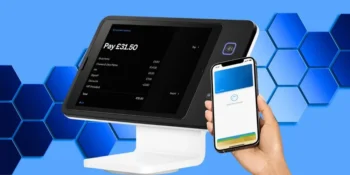In today’s rapidly evolving digital landscape, the seamless integration of technology has become indispensable for organizations seeking to stay competitive and responsive to changing market dynamics. Technology integration involves strategically blending disparate technologies, systems, and processes to create synergies, streamline operations, and drive innovation across diverse domains. In this article, we embark on a journey to explore the transformative potential of technology integration, uncovering its principles, applications, and impact on businesses and society.
Understanding Technology Integration
Technology integration is the cohesive assimilation of various technological components and systems into a unified framework, enabling interoperability, collaboration, and data exchange across different platforms and environments. It involves converging hardware, software, networks, and data sources to create holistic solutions that address complex challenges and capitalize on emerging opportunities.
Interoperability and Compatibility
Interoperability lies at the core of technology integration, ensuring that different systems and technologies can communicate, share data, and work together seamlessly. Compatibility standards, APIs (Application Programming Interfaces), and middleware solutions facilitate interoperability between disparate platforms, devices, and applications.
Data Integration and Analytics
Data integration plays a crucial role in technology integration by consolidating data from multiple sources, formats, and systems into a unified repository. Advanced analytics tools and techniques are then applied to derive insights, patterns, and actionable intelligence from the integrated data, enabling informed decision-making and driving business outcomes.
Process Automation and Orchestration
Process automation and orchestration streamline workflows, eliminate manual tasks, and enhance efficiency by automating repetitive processes and integrating disparate systems into end-to-end workflows. Workflow automation platforms, robotic process automation (RPA), and business process management (BPM) systems enable organizations to optimize procedures and adapt to dynamic business environments.
Applications of Technology Integration
Technology integration finds diverse applications across various industries and sectors, revolutionizing business operations, enhancing customer experiences, and driving innovation:
Enterprise Resource Planning (ERP)
ERP systems integrate core business functions such as finance, human resources, supply chain management, and customer relationship management into a unified platform, enabling real-time visibility, collaboration, and decision-making across the organization. ERP solutions enhance operational efficiency and agility by streamlining processes and data flows, driving business growth and competitiveness.
Internet of Things (IoT)
IoT technology integration connects physical devices, sensors, and machines to the internet, enabling data collection, analysis, and control in diverse domains such as manufacturing, healthcare, transportation, and smart cities. By integrating IoT devices with existing systems and infrastructure, organizations can unlock new insights, automate processes, and optimize resource utilization, improving productivity and innovation.
Customer Experience Management (CXM)
CXM platforms integrate customer data, interactions, and feedback across multiple touchpoints, channels, and systems to deliver personalized and seamless knowledge throughout the customer journey. By leveraging data analytics and AI-powered insights, organizations can anticipate customer needs, tailor offerings, and foster long-term relationships, driving customer satisfaction and loyalty.
Advancements in Technology Integration
Recent advancements in technology integration are driving innovation and expanding the possibilities for organizations:
Cloud Integration and Hybrid IT
Cloud integration enables organizations to seamlessly connect on-premises systems with cloud-based services and applications, creating a hybrid IT environment that combines the scalability and agility of the cloud with the control and security of on-premises infrastructure. Cloud integration platforms, APIs, and microservices architecture facilitate seamless data exchange and interoperability between cloud and on-premises systems.
Artificial Intelligence and Machine Learning
Artificial intelligence (AI) and machine learning (ML) technologies are being integrated into various systems and applications to automate decision-making, enhance predictive capabilities, and deliver personalized experiences. AI-powered analytics, chatbots, and recommendation engines leverage data integration and analysis to drive insights and actions, empowering organizations to deliver value at scale and accelerate innovation.
Blockchain and Distributed Ledger Technology
Blockchain and distributed ledger technology (DLT) are revolutionizing technology integration by enabling secure, transparent, decentralized data exchange and transactions. Blockchain-based smart contracts, decentralized applications (dApps), and supply chain networks facilitate trustless interactions and streamline processes, reducing friction and enabling new business models and ecosystems.
Challenges and Future Directions
Despite its potential, technology integration poses several challenges and opportunities for further advancement:
Complexity and Scalability
Managing the complexity and scalability of integrated systems and architectures remains a significant challenge for organizations. As technology ecosystems become increasingly interconnected and heterogeneous, organizations must invest in robust integration frameworks, governance models, and scalable infrastructure to ensure seamless operation and adaptability.
Security and Privacy
Ensuring the security and privacy of integrated systems and data is paramount to mitigating risks such as breaches, cyberattacks, and regulatory non-compliance. Strong authentication mechanisms, encryption protocols, and data governance frameworks are essential to protecting sensitive information and maintaining trust in integrated environments.
Talent and Skills Gap
Addressing the talent and skills gap in technology integration is critical to unlocking its full potential and driving innovation. Organizations must invest in activity and upskilling initiatives to cultivate a workforce proficient in integration technologies, data analytics, cybersecurity, and emerging digital capabilities, ensuring they can effectively design, implement, and manage integrated solutions.
Conclusion
Technology integration reshapes how organizations operate, collaborate, and innovate in an increasingly interconnected and digital world. By harnessing the power of integration, organizations can unlock new opportunities, drive efficiency, and deliver value to customers and stakeholders. As we continue to push the boundaries of technology integration, the journey toward digital transformation shines brightly, guided by the promise of innovation, collaboration, and human ingenuity.










